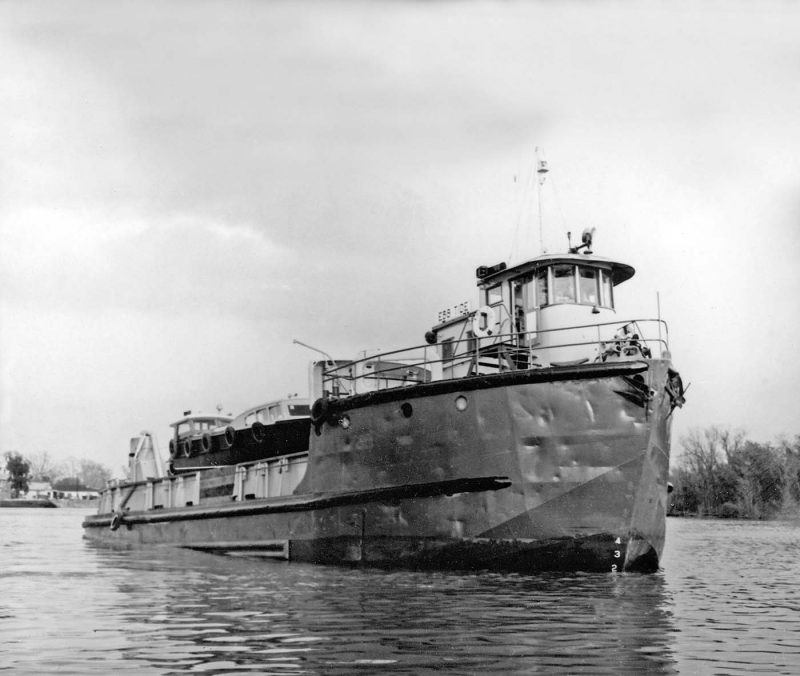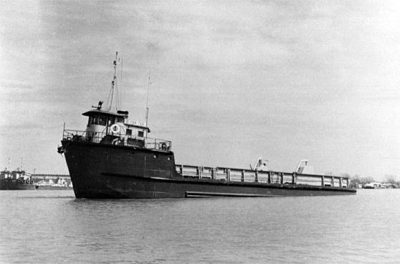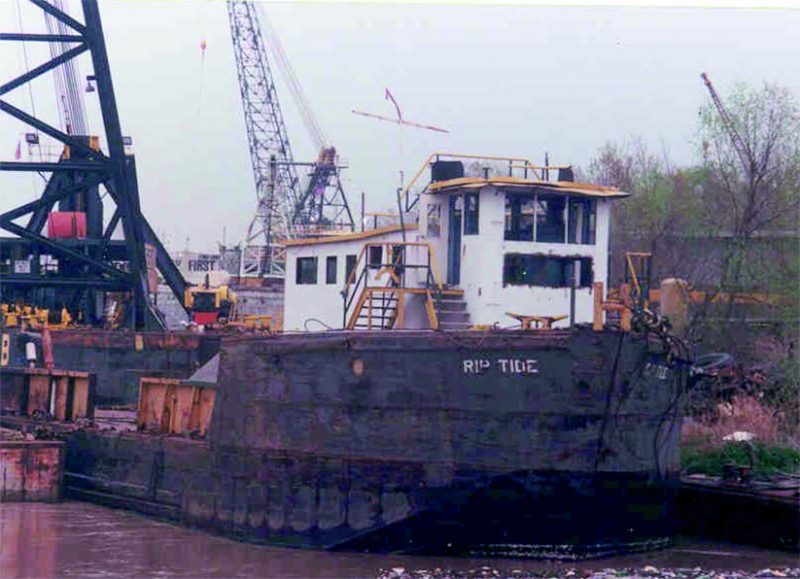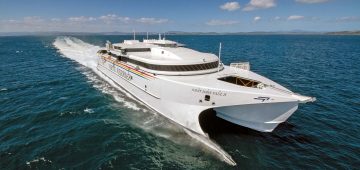The first purpose built Offshore Vessel
by Vic Gibson

In 1955 Elvis Presley signed with Sun Records and was voted most promising male country star at the annual country disc jockey convention in Nashville. At the same event he was approached by a songwriter with “Heartbreak Hotel”. It was the King’s first recording with RCA Victor and was to go to No 1 the following year. Elsewhere, in the heartland of America, Henry Ford initiated the production of the Ford Thunderbird in competition with the Chevrolet Corvette which had recently appeared on the sports car scene and during the year businessman Ray Kroc purchased the burgeoning burger chain from the McDonald brothers. On 25th March of that year, almost unnoticed by the mainstream population of the country, a small ship made its way down the Missisippi and changed marine support to the offshore oil industry for ever.
But not wanting to get ahead of ourselves we should maybe look back to events at the turn of the 20th century as the oil industry in the southern states was almost randomly drilling holes in the ground, with the steadily reducing chance of striking oil. The process was known as “wildcatting”, with the embrionic industry focused on discovery of new reserves, rather than the proper exploitation of those that had already discovered. In that environmen the oil seeps and visible gas discharges were attractive to the wildcatters, and as early as 1870 gas was discovered in a well which had been drilled in order to supply water to an ice works in Shreveport, a town in the vicinity of Lake Catto. Later, in 1904, positive efforts were made to drill for oil in the locality, and in 1905 the first of a number of fires due to high pressure gas occurred. When wells caught fire they were just left to burn. Gas wasn’t much use to anyone so they thought.
Then Gulf Oil (now part of Chevron) decided to build platforms on the lake from which drilling could be carried out. The company developed a process which involved piles cut from the woodands in the area and oilfield equipment brought up the Red River by barge from Baton Rouge, a trip of about 300 miles. Their first well drilled over water, “Ferry Lake No 1”, was completed by the company in May 1911. Fortuitously they struck oil, the well producing 450 barrels a day.
Several companies then took up the challenge of drilling over water in Lake Maracaibo using the experience gained in Lake Caddo, and intially it seemed that the same technique could be applied. Unknown to the drillers, the wooden piles proved to be attractive to the Teredo Ship Worm which, once it had found a platform, would eat away at it until finally, without warning, the whole structure would collapse into the water. Hence by the 1920s concrete piles were being used in the lake and later, in the 1930s, steel structures. In the same decade the companies found that, while they needed to install the derrick on a permanent base, they could use a tender vessel with all the support systems on board. The one thing which was universal to the whole process was the use of the same plaform that had been used for the drilling operation for the production of the oil, but as time passed, and the likelihood of an oil strike as the result of every drilling operation decreased, a change was considered.


Enter Louis Giliasso, who had been a merchant marine captain, and had worked in the Venezuelan oilfields in the 1920s. He applied his marine knowledge to the requirement to be able to move all the drilling equipment in one shot, and designed a barge which could be sunk to the seabed, then once the hole had been drilled, successful or not, it could all be moved on. But the idea did not light anyone’s fire in the oil industry and so he shelved the whole thing, and moved to Mexico where he opened a bar. Later, Texaco then the Texas Company, exploring the same idea, found that Captain Giliasso had taken the precaution of gaining a patent on the design, and so with some effort they located him. He allowed them to build the first mobile drilling unit, fittingly called the Giliasso, and it went to work in 1934 in the swamps of Louisiana. The drawback of it was obviously that it could only work in water depths which were slightly less than the depth of the barge from deck to keel.

Without much further forward progress, at least in the offshore business, America entered the Second World War, but when the men who had been in the fighting returned home they applied themselves to further activity in the Gulf of Mexico. The Magnolia Petroleum Company built a platform eight kilometres off Point Au Fer, on which not only was there a drilling rig but also the following as listed in the book “50 Years Offshore” by Hans Veldman and George Lagers; “diesel engines, mud pumps, a mudpit, a freshwater tank, a mud mixing installation, a cementing pump, fuel tanks, a tool shed, a drilling shed, a radio room and an office”. This list gives you an idea of the difference between operating commercial vessels whose job is purely to carry cargo between A and B in as large a quantity as possible, and the requirement for a ship to fulfil the diverse needs of the offshore oil industry. And while there is no record about how the various supplies were ferried out to the Magnolia platform, the records do say that a couple of shrimpers were used to transfer personnel between an accommodation ship moored close to the shore and the platform where the work took place. Veldman and Lagers did not bother to explain anything about the commodities list, and while we can see the need for fuel and water what about mud? Mud was, and still is, the name given to drilling fluid, which in those days was the mineral baryte, supplied to the rig in bags, and mixed with fresh water. This liquid was pumped down the centre of a rotating drill string (in itself an inovation back then) and flowed back to the surface, carrying with it the debris from the bottom of the hole, as well as providing a hydrostatic head to keep any hydrocarbons down there. The cement, used to keep in place the tubing used in the well, would also be shipped out in bags.
Sign-up today to read the full article!
Simply click below to sign-up and read the full article, as well as many others, instantly!






Comments
Sorry, comments are closed for this item